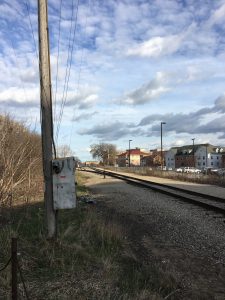Jun
23

Posted by Margot M on June 23rd, 2017
Posted in: Commentary, Public Health
Tags: collective impact, community engagement

On the road, Madison, WI
Midway through the 2017 Wisconsin Health Literacy Summit, I put down my iPhone and stopped tweeting. I was captivated by presenters Dennis Johnson and Ben Williams. They were sharing their work as managing partners of Sort Sol Group in Madison, WI. The gist of their session was working the Collective Impact model in community health work. My handwritten notes include these statements: LOGIC; this is a society-wide issue; united advocacy voice for people with barriers; who owns this? there is a problem with ownership; turf issues; backbone support–resources and skills to convene and coordinate participating organizations.
Nearly three months later, I am piecing together these notes as I prepare to convene a group of librarians, educators and community organization staff who are interested in Community Health Engagement. I am particularly interested in the concept of backbone support, as I believe NNLM works with backbone organizations, and may even take on the dual roles of backbone and funder in health information outreach.
Sort Sol Group acts as convener for government, business, philanthropic and neighborhood organizations. They take an evidence-based approach, and facilitate group learning. Two projects mentioned during their session were the Healthy Kids Collaborative, a group of 150 organizations working to improve children’s health in Dane County, and Any Given Child, which brings together 40 education, business and art organizations to improve access to the arts for children in Madison, WI.
In New England, Shape Up Somerville is an example of Collective Impact. The initial project targeted obesity prevention in 1st-3rd graders through environmental change. Schools, retail stores and restaurants offered healthier foods. The city improved the sidewalks, kids were encouraged to walk to school, and city employees received discounted gym memberships. The result was a lower Body Mass Index in the targeted population.
Collective Impact requires that one organization steps up to provide infrastructure. This backbone support involves facilitating meetings, coordinating communications, and analyzing data. Funders might find themselves drawn into this role, but this is tricky territory. Taking on the backbone support role could lead to questions of ownership.
As a funder, NNLM has the capacity to act as convener. We are working in the health information field, and we have developed relationships in various sectors. NNLM is able to put organizations in touch with like-minded folks. We offer training in how to utilize National Library of Medicine resources in community health work. Yet, we do not own the projects that we fund. We do not reside in the affected neighborhoods.
The Collective Impact model suggests that those neighborhoods are best served if NNLM encourages applicants to align their work with current neighborhood initiatives. Our primary role is to support applicants with training and funding. This video suggests that their ultimate success might depend upon their alignment with collective neighborhood efforts.